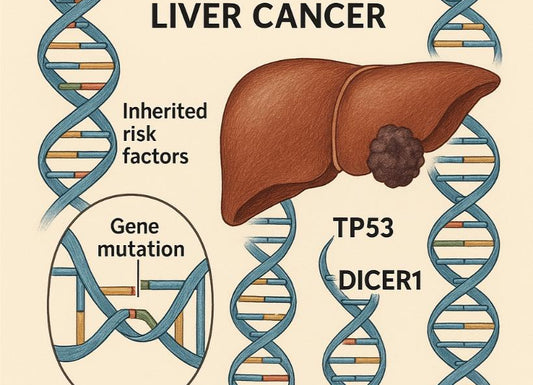Can Skinny People Get Diabetes? A Complete Guide to Risks, Myths, and Real Signs
 Written By
Abel Tamirat, MD
Written By
Abel Tamirat, MD

Diabetes is one of the major health concerns both globally and in the United States that affects people of different backgrounds. When most people think of this condition, they imagine it primarily associated with being overweight. But is this assumption accurate? Can skinny people get diabetes too?
The short answer is yes. Despite the common misconception that diabetes only affects those only overweight or obese, individuals with normal or even low body weight can also be at risk. Several underlying factors such as genetics, lifestyle, and hidden health issues contribute to the risk of diabetes in lean individuals.
This guide aims to debunk myths, explain the real causes of diabetes in skinny individuals, and provide valuable insights into managing and preventing diabetes effectively.
Common Myths About Diabetes and Body Weight
1. "Only Overweight People Get Diabetes"
Fact-checking this myth reveals that diabetes is not exclusive to those with obesity. While excess body fat is a significant risk factor for type 2 diabetes, many other factors like genetics, family history, pre-diabetic states, visceral fat, or even sedentary lifestyles play a critical role.
2. "Thin Means Healthy"
Being thin isn’t automatically a sign of optimal health. Conditions like Metabolically Obese Normal Weight (MONW) or “TOFI” (Thin Outside, Fat Inside) reveal that thin individuals can have significant visceral fat, increasing their risk for diabetes and other metabolic disorders.
3. "Fit People Can’t Develop Type 2 Diabetes"
Regular exercise and healthy eating habits are crucial, but they don’t make someone immune to diabetes. A genetic predisposition or other underlying health issues may still cause diabetes to develop.
Breaking these myths helps us understand that diabetes risk involves much more than just body size.
Can a Thin Person Develop Type 2 Diabetes?
Yes, thin individuals can still develop type 2 diabetes. Here’s how it happens:
-
Insulin Resistance: Even without visible fat, hidden visceral fat can cause insulin resistance, which is a major precursor to type 2 diabetes.
-
Genetics: A strong family history of diabetes can predispose a person to the condition, regardless of weight.
-
Lifestyle Factors: Poor diet choices or lack of physical activity can contribute to the development of diabetes even in lean individuals.
Why Do Skinny People Get Diabetes?
1. Genetics and Family History
A genetic predisposition is one of the leading causes of diabetes in lean individuals. If one or both parents have diabetes, the likelihood of developing the condition increases significantly.
2. Hidden Visceral Fat (TOFI)
Visceral fat surrounds organs like the liver and pancreas, disrupting their normal functions. It’s often not visible externally, meaning that even slim individuals can accumulate dangerous levels of this fat.
3. Chronic Stress and Poor Sleep
Elevated cortisol levels due to stress or inadequate sleep can worsen insulin resistance, increasing the risk of diabetes over time.
4. Pancreatic Issues
Autoimmune reactions, pancreatic disorders, or chronic conditions can impair insulin production, leading to types of diabetes such as type 1 or Latent Autoimmune Diabetes in Adults (LADA).
5. Sedentary Lifestyle
Even thin individuals can face higher risks of insulin resistance if they lead an inactive life. Regular physical activity is essential to maintaining metabolic health.
Risk of Diabetes in Lean Individuals
Data shows that diabetes doesn’t discriminate by weight. The term MONW (Metabolically Obese Normal Weight) refers to lean individuals who exhibit several metabolic health issues typically seen in obese individuals, including insulin resistance, high cholesterol, and elevated blood sugar levels.
Studies also highlight that people with normal body weight but stored visceral fat are at higher risk of developing heart disease and type 2 diabetes.
Symptoms of Diabetes in Skinny People

Diabetes in lean individuals may show subtle or overlooked symptoms, including:
-
Persistent fatigue
-
Frequent urination (especially at night)
-
Excessive thirst or hunger
-
Blurred vision
-
Sudden or unexplained weight loss
-
Slow-healing wounds
If you notice these signs, regardless of your weight, consult a healthcare professional for testing.
When Should a Skinny Person Get Screened for Diabetes?

It’s crucial for lean individuals to undergo diabetes screening under the following circumstances:
-
Family History of diabetes
-
Frequent Symptoms, such as excessive thirst or unexplained fatigue
-
Sedentary Lifestyle combined with a high-sugar diet
Tests like fasting glucose, HbA1c, and oral glucose tolerance tests can help identify potential risks early on.
Type 1 Diabetes in Thin Adults
While type 1 diabetes is less associated with body weight, it can develop regardless of an individual’s size. Type 1 diabetes occurs due to autoimmune destruction of insulin-producing cells in the pancreas and requires lifelong insulin therapy.
Understanding LADA (Latent Autoimmune Diabetes in Adults)
LADA is often misdiagnosed as type 2 diabetes initially because it shares similar characteristics. However, it is an autoimmune condition that primarily affects adults, often those who are lean. Testing for specific antibodies can aid accurate diagnosis and point to appropriate treatment.
What is TOFI and How Does It Cause Diabetes?
TOFI, or Thin Outside, Fat Inside, refers to individuals with normal or low BMI but with high levels of visceral fat. This condition heightens the risk of insulin resistance, leading to type 2 diabetes. Methods like waist-to-hip ratio or DEXA scans help identify TOFI.
Prevention Tips for Lean People at Risk of Diabetes
Here’s how lean individuals can lower their risk of developing diabetes:
-
Maintain Regular Physical Activity
-
Include strength training and aerobic workouts weekly.
-
Adopt a Balanced Diet
-
Reduce refined carbs and sugars. Focus on whole grains, lean proteins, and healthy fats.
-
Monitor Metabolic Health
-
Periodically check blood sugar, cholesterol, and blood pressure.
-
Prioritize Sleep and Stress Reduction
-
Sleep for 7–9 hours per night and practice mindfulness to reduce cortisol levels.
When to Talk to Your Doctor
Even if you’re thin, it’s essential to discuss any symptoms, family history, or metabolic concerns with your healthcare provider. Early screening and lifestyle adjustments can significantly reduce diabetes-related complications.
Focus on Internal Health, Not Just Weight
Diabetes doesn’t discriminate, and neither should we when evaluating health risks. The focus should shift from external appearance to internal metabolic health. Weight is just one of many factors contributing to diabetes, and lean individuals must not dismiss the potential risks associated with insulin resistance and hidden visceral fat.
Taking proactive measures, such as regular screenings, adopting a healthy diet, and engaging in consistent physical activity, can make a significant difference. Remember, early detection is key to effective management and prevention.
Related Resources
- Is Feeling Sleepy After Eating a Sign of Diabetes?
- Blood Sugar Test Kit: A Complete Guide
- Urine Glucose Levels Chart: Understanding Results
References
Diabetes Overview. (2023, September 8). Diabetes: What It Is, Causes, Symptoms, Treatment & Types. Retrieved April 10, 2025, from Cleveland Clinic website: https://my.clevelandclinic.org/health/diseases/7104-diabetes
Latent Autoimmune Diabetes in Adults (LADA): Symptoms. (2024, October 14). Retrieved April 10, 2025, from Cleveland Clinic website: https://my.clevelandclinic.org/health/diseases/lada-diabetes
Latent autoimmune diabetes in adults (LADA): What is it? (2025). Retrieved April 10, 2025, from Mayo Clinic website: https://www.mayoclinic.org/diseases-conditions/type-1-diabetes/expert-answers/lada-diabetes/faq-20057880
LeWine, H. E. (2012, October 8). Diabetes can strike—hard—even when weight is normal - Harvard Health. Retrieved April 10, 2025, from Harvard Health website: https://www.health.harvard.edu/blog/diabetes-can-strike-hard-even-when-weight-is-normal-201208085121
Sapra, A., & Bhandari, P. (2023, June 21). Diabetes. Retrieved April 10, 2025, from Nih.gov website: https://www.ncbi.nlm.nih.gov/books/NBK551501/
The. (2019, April 11). Can Skinny People Get Diabetes? Retrieved April 10, 2025, from Healthline website: https://www.healthline.com/health/diabetes/can-skinny-people-get-diabetes

Dr. Abel Tamirat is a licensed General Practitioner and ECFMG-certified international medical graduate with over three years of experience supporting U.S.-based telehealth and primary care practices. As a freelance medical writer and Virtual Clinical Support Specialist, he blends frontline clinical expertise with a passion for health technology and evidence-based content. He is also a contributor to Continuing Medical Education (CME) programs.



